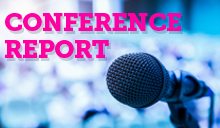LOADING
Share

So why go to a “live” conference at all?
After all, there are so many ways and means to acquire continuing education (CE) credits online. In this digital age, there are so many different choices to view lectures by experts in our field, so why fork out hundreds of dollars to travel by air, train or car to spend three to five days in a hotel or conference site?
Fortunately, the answers are many, which is why professional conferences in our field of behavioral health are booming.
One primary explanation might be that modern professionals spend so much time on the Internet that they are eager to meet real people without a screen to separate them. And, of course, the beauty and value of face-to-face encounters is that they are exclusive.
Nothing can replace the value of sharing experiences with like-minded colleagues whose daily lives involve counseling, treating, researching or educating people who share being adversely affected by chemical or behavioral addictions and/or some form of mental illness.
The digital world has disrupted and transformed the way media, retail, and industrial spheres work, and it is now spreading into medicine and government.
This ought to imply that conferences are ripe for disruption. In a world where we can all connect online instantly, there is no need to leave the house, office or your local coffee shop.
However, the live conference business does not appear to have been seriously hurt at all.
In our field, like many others, conferences have become such a deeply ingrained ritual that you can mark the passage of the seasons by these events.
Good thing, too.
To view USJT’s upcoming conferences, click here.
Previous Article
USJT Conference Report









 Counselor Magazine is the official publication of the California Association of Addiction Programs and Professionals (CCAPP). Counselor offers online continuing education, article archives, subscription deals, and article submission guidelines. It has been serving the addiction field for more than thirty years.
Counselor Magazine is the official publication of the California Association of Addiction Programs and Professionals (CCAPP). Counselor offers online continuing education, article archives, subscription deals, and article submission guidelines. It has been serving the addiction field for more than thirty years.